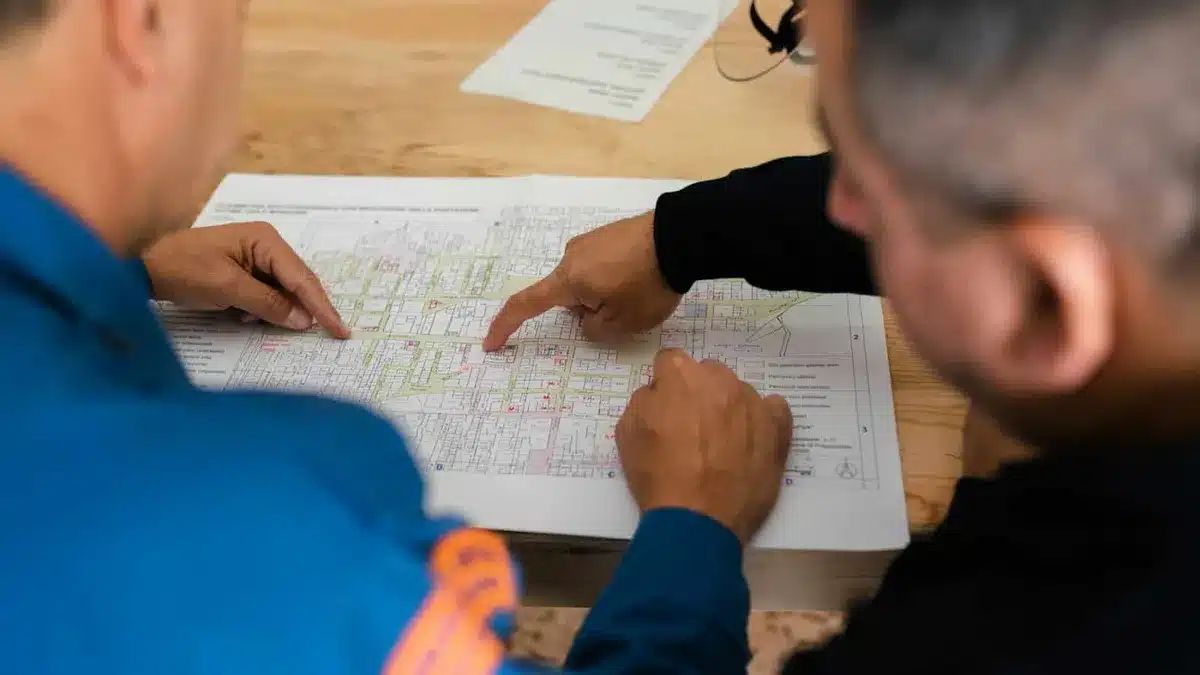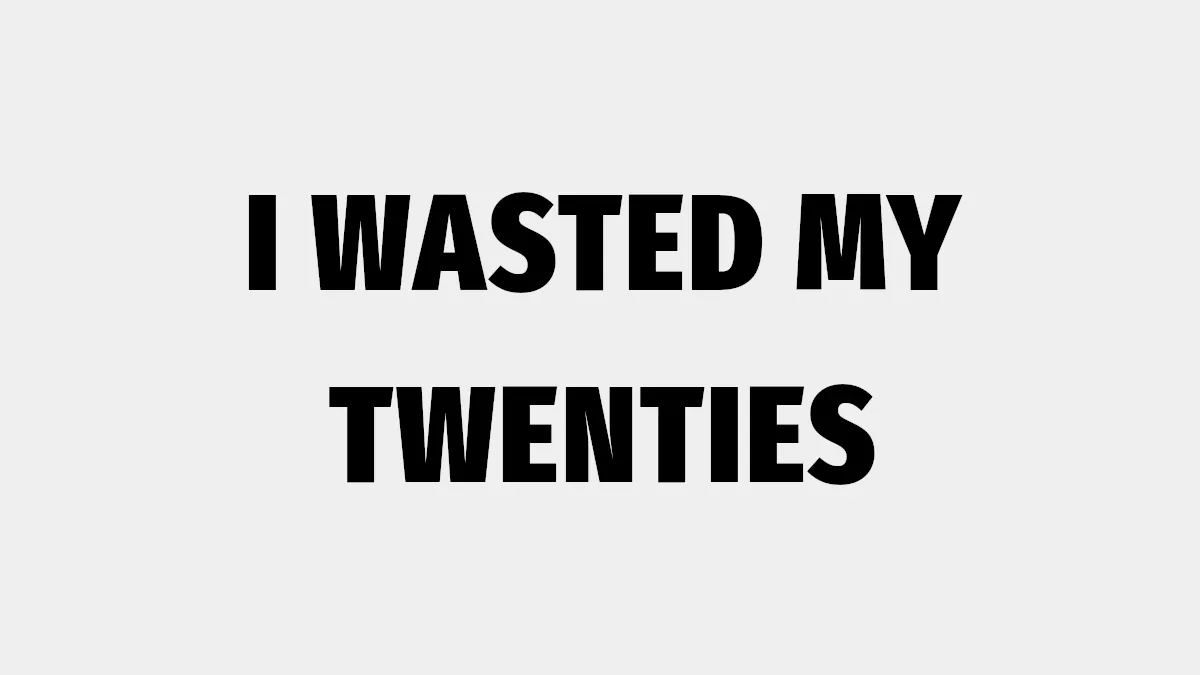I get it; as a child, I begged my Mom to buy Mega Speed Reading after seeing it on Shop America (A now defunct shopping channel.) She did, and I loved it. I slowly and methodically went through the course. It was my initiation into something I’d continue to learn about for the next 25 years- speed reading. I want to share that experience and create the ultimate guide on how to read faster and retain more.
Table of Contents
- Why You Want to Read Faster
- Why Do We Read So Slowly?
- Test Your Current Reading Speed
- How Fast Should You Read?
- The Speed Reading Methods
- How to Remember What You Read
- Speed Reading Tips
Why You Want to Read Faster
Elon Musk explained to Joe Rogan on his podcast that one of the benefits of his NeuroLink implant is the ability to import data into the mind at rates like a computer. In Musk’s mind, one of the biggest obstacles to progress is the bottleneck created by the input data rates of our minds.
Think about it. A modern-day home computer could scan the complete works of Shakespeare into memory in less than a second while we are still stuck reading at only 300 words per minute.
Doubling the worlds reading speed could be a massive engine for progress.
Reading Faster Gives You More Time for Other Things
If you’re a student or need to do vast amounts of reading for work, reading faster will make you more productive. It might give you more time for socializing, completing other tasks, or just more time to read even more!
To Get Through the Classics You Feel You Should Have Read.
“Haven’t you read 1984?” I’ll admit that these words may have slipped from my lips too. But there’s good reason to have a shared body of knowledge in books everyone has read; it gives us a common language to communicate complex ideas. The words “like in 1984” do so much more to describe an authoritarian surveillance state than we could on our own.
To Learn More and Become More Valuable.
In the past two decades, self-help has exploded into a genre attracting everyone who wants to become more valuable. Once a corner of the bookstore you wouldn’t want to be seen, if you’re lucky enough to have a brick-and-mortar book store near you still, the self-help section probably features prominently with an expanded section.
Why? We’re more aware than ever of the information out there, and the skills and tools we could learn to improve our jobs, bank balances, and lives.
It’s a common sentiment (though a misconception) that if we could only cram more information into our brains, it would solve all our problems.
Why Do We Read So Slowly?
Your Eyes Don’t Move Across the Page as You Think.
When we read, we imagine our eyes sweeping across the line the same way a scanner scans a page (are scanners still a thing? And do they still do that?) But, anyway, your eyes don’t move like that.
Your eyes jump from word to word, pause on some words, go back to previous words and then jump forward. If you want to see this for yourself, cover one eye and read a few lines; the jerky movements of your eye will become more perceptible. Try it; I’ll wait.
You Don’t Read Enough.
Like most skills, the more you do it, the better you become. So if your goal is to read more, the best way is to spend more time reading. Reading more will make you a better and faster natural reader, even without the methods below.
In bodybuilding, trainers will tell you there is no point in taking steroids if you haven’t already maxed out your natural potential. Newbies walking into the gym don’t need to take testosterone; they can gain pounds of muscle naturally. Once they’ve done that, steroids may be the only option to continue putting on mass.
The same is valid for reading. If you haven’t put the time in to become an experienced reader. Do that first! If you cannot read for 15 minutes without falling asleep, you need to address that before you start taking speedread intravenously.
Test Your Current Reading Speed
According to Staples, who sponsored a speed reading test, the average adult reads at 300 words per minute. However, it is often quoted at 220-250 wpm, so don’t worry if you cannot reach these speeds.
| Person Type | Reading Speed (words per minute) |
|---|---|
| Third-grade students | 150 |
| Eighth-grade students | 250 |
| Average adult | 300 |
| Average college student | 450 |
| Average high-level executive | 575 |
| Average college professor | 675 |
| Speed readers | 1500 |
| World speed reading champion | 4700 |
Before you start trying to improve your reading speed, you need to know what your current rate of reading is. If you haven’t done so already, use one of the methods below to find out how many words per minute you read.
Without testing your current reading speed, you won’t know how much you’ve improved or if the speed reading methods are working.
If you usually read physical books, use that for your test; try to use the style and genre you typically read.
The simplest way to determine your approximate reading speed is to set a three-minute timer and start reading. When the timer goes off, count the words and divide them by three.
If you want a method without all the counting and math, simply set a timer for one minute and read something from a word document. Then, when the timer goes off, use the word count feature to count the number of words- easy!
Alternatively, use this free online reading test.
How Fast Should You Read?
You don’t need to become a speed reader to gain the benefits of speed reading. Learning how to read faster, even 50% faster, is still a considerable increase. Most people can double their reading speed comfortably with the techniques below. This means reading a book twice as fast (or reading twice as many books!)
The Speed Reading Methods
I’ve tried out many supposed speed reading methods over the years, and I’m afraid to tell you that 90% of them don’t work. Most of them are thought up and published as brain fart ideas that have never been trialed or tested and have never gotten good results.
So rather than make up some new way of reading fast that might work, I’ll share the speed reading strategies that have worked for me and many others over the years and will increase your reading speed.
RSVP – The only way to immediately and effortlessly improve your reading speed
It sounds too good to be true, but hear me out.
I first heard about RSVP when I saw a demo of Spritz, a technology that allowed me to double my reading speed instantly. It was the hold grail of speed reading I had always sought.
I had a vision of being able to read a book on a smartwatch, and Spritz seemed like the way to do it. But first, let me explain to you what RSVP is.
Rapid serial visual presentation is a method of flashing one word at a time to you very quickly. You focus on one point, and the words flash up in succession. This does a few things to improve reading speed.
- You don’t need to move your eyes
- You can’t go back
- Your eyes won’t wonder
- It doesn’t result in a loss of reading comprehension (until you get to the crazy speeds)
The RSVP method isn’t perfect, though, and depending on what you are reading, some downsides may make it unusable for you.
You can’t stop to think.
The RSVP method can be frustrating if you’re reading something thought-provoking or even just something where you occasionally need to think for a few seconds about what you just read. An interesting point comes along, and your brain says, “Is that right? Let me..” but more words keep coming, and you immediately lose the thought as you continue through the next paragraph.
You can’t reread the paragraph.
In a program that only shows you one word at a time, going back to the last paragraph to reread it is a problem. It happens all the time, a complex idea or plot twist occurs, and you want to go back to be sure you know what’s going on.
Different RSVP apps have workarounds to allow you to do this, but they’re all a jarring experience and take you out of flow compared to just moving your eye back a paragraph as you would when reading a physical book.
You have to do it on a screen.
We stare at screens most of the day, and I love that reading can be a break from that. Even when I use my eReader, I don’t feel like I’m spending more time looking at a screen. But RSVP software exists exclusively on traditional mobile devices (phones and tablets), so the experience can be draining as you effectively stare intently at a screen flashing 100s of words a minute at you.
I have read for long periods using RSVP, but I feel my eyes suffered for it.
What RSVP app should I get?
Looking through the app stores now, there are many options for RSVP readers. I plan to make a review of the best RSVP reading apps soon, but for now, here are my recommendations.
The Tim Ferriss Method
A few years ago, Tim Ferriss made a video about speed reading, and he had an interesting method I’d never used before. It’s simple, tasks only a little practice, and you can do it right now.
You’ll need an eReader (a book will work but not well) and two rubber bands (yeah, seriously.)
Here’s the idea: We already know how our eyes move across the page when we read, but we haven’t talked about what happens when we go from the end of one line to the beginning of the next.
Due to the considerable movement compared to the tiny movements between words, moving to the next can waste more time here. Our eyes are more likely to wander; we’re more likely to pause and slow our reading down.
The solution? Reduce the space between the beginning and end of each line. That’s where the rubber bands come in. Wrap a rubber band around each side of your eReader (see why an eReader is more straightforward now?), creating a margin about one word from each edge.
Use these new margins as the start and end of where your eyes can travel. You will need to use your peripheral vision to read each line’s first and last words. Of course, once you’re used to your new margins, you can remove the bands. Don’t revert to reading to the edges of the page again.
This does two things:
- It reduces the distance your eyes travel when moving to the following line
- It reduces the number of jumps your eyes make on each line by two.
These two minor improvements can add up to some serious time savings.
Advanced mode: Bring your margins in another word, then another.
Mega Speed Reading Method
For young me, Mega Speed Reading was a great program. Sure, it overpromised (like everything Trudeau produced), but in a world where you couldn’t get the answer to anything in seconds with a device small enough to fit in your pocket, it was a great way to learn something new.
Howard Berg used a few ideas in Mega Speed Reading to increase his reading speed to world champion levels. These are the most useful ones that I’ve been able to use over the years:
Don’t subvocalize
When we’re taught to read, we’re taught to “sound it out,” which is great if you’re learning to read, but sounding it out isn’t ideal when you want to read fast. The truth is, even after decades, most of us are still sounding it out when we read. We might not be reading aloud, but inside our heads, we’re saying every word.
This is called subvocalization, which you need to stop if you want to achieve real speed reading. There are a few tricks you can use to stop subvocalizing.
- Hum – Humming while reading can help to stop subvocalization; the idea is that you don’t speak while you’re humming.
- Squeezing – Squeezing your lips like you’re going to peck someone on the cheek can also help to stop subvocalization.
- Reading faster – forcing yourself to read at speed faster than you can speak will automatically stop subvocalization.
Of course, you can’t do these things forever, but practicing them to get the feel of reading without subvocalization will give you the right idea, then you can try without the tips.
Push a Pace
This is a tip you need to try! Use your finger, a pencil, pointer, or anything handy to make you read faster. Here’s what you do.
- Put your finger on the start of the line.
- Move it across the line at a constant speed.
- Follow your finger with your eye, reading the word in front of your finger (not behind!)
- Go to the following line. Repeat.
Sounds too easy to be true, but this one tip will improve your reading speed without question. It does a few things.
As long as you follow your finger, your eyes will no longer be jumping from word to word; they’ll be sweeping across the page.
You can’t stop or pause even if you want to because your finger will go over the word, and you’ll miss it.
Increase your speed simply by moving your finger faster. When you hit a plateau, you can continue to get better and faster by pushing a pace beyond your capabilities, i.e., go more quickly than you can comprehend. Then when you slow down a little, it will seem more manageable.
How to Remember What You Read
Everyone who has ever read a book has thought, “I don’t remember anything of what I just read.” But only some of us then figure out how to remember more of what we read. So the question is worth asking, how much should we be remembering?
- You need to know what you want to remember
- You need to find that information
- Then you need to go back and remember it.
How much of a book should I remember?
This is the question we must ask ourselves. The answer is different for every book we read. What you should remember from “The Interpretation of Dreams” is likely different than what you should remember from reading The Bible or a Stephen King novel. Here are a few things that you might want to remember from a book:
- The author & bio
- Quotes
- Facts
- The main Idea/moral
- The storyline/summary
- The characters’ names
Knowing what you want to remember from a book before reading is half the battle. You’re not going to remember the whole book, so you must prioritize something.
If I sit down with a classic like Homer’s Illiad, I want to finish the book knowing the storyline and what happened to the main characters. So when I’m reading, and Homer decides to introduce dozens of kings from the various Greek states along with their sons and stories about where they came from, I’ll read it, I’ll enjoy it, but I won’t try to remember any of it.
When Homer tells us why Achilles refuses to fight, something turns on in my head and tells me to start paying attention.
If I’m reading Jung, I might try to remember his main point and maybe find a good quote that sums it up.
Read with a highlighter.
Once you know what you want to remember, reading with a highlighter becomes much more straightforward. No longer are you just highlighting everything or highlighting random passages, wondering why you highlighted them when you reread.
A highlighter is especially useful if you want to remember quotes, facts, and figures. If you want to remember the storyline, you’re better off using a pencil to annotate your pages. When you read a long section about a particular plot twist, you can usually summarize it in a phrase or sentence. Later that phrase will be much easier to memorize than trying to remember the entire section.
Read with a notepad.
If you don’t like to mark your book or read with an eReader, keeping a notepad with you while you read can serve the same purpose. Remember, you need to know what you want to remember first, then write those things down.
Use a mnemonic
If you want to put the things you read directly into your memory, you will need a mnemonic device or memory system already set up. There are many memory techniques to choose from. It can be time-consuming, but it’s well worth the time put into it. Examples that would be appropriate for memorizing the content of a book are:
- Memory Palace
- Association
- The POA system
- Major System
Go back and memorize what you highlighted/learned
Once you have finished reading, you will need to go back to memorize the notes you took or highlights you made. Again, you can use a memory system for this, but simply reading your notes a few times and rote memorizing them will suffice.
Speed Reading Tips
Are you willing to change the way you read?
You’ll need to change the way you do things if you’re serious about reading faster and remembering more of what you read. This can be tough for people. They want the result but don’t want to change how they work. But as Jim Rohn is famed for saying.
“Things won’t change until you change.”
Jim Rohn
So prepare yourself to change, to do things that seem uncomfortable or challenging, but if you do, you can have the speed and comprehension Kevin Treadeu promised in Mega Reading or something like it.
You need to practice what you want to improve.
Knowing these new speed reading techniques isn’t enough; you must put in the time to practice them. Only after using one or more of these speed reading techniques will you start to make progress with both speed and comprehension.
Practicing memorizing the information you earmark is just as important as reading if your goal is to retain as much as possible.
Speed Reading Techniques that Work
- RSVP
- Following your finger
- Shortening your book width
- Stop subvocalizing
- Audiobooks on fast forward (does this count as reading?)
But there are some techniques I’ve read about over the years that, try as I might, I can’t get to work. They might work for you, but they didn’t work for me.
- Reading two (or more) lines at once
- Reading forward and backward
- Skip the unimportant words
- Prereading
Preread
Scanning a text briefly before you start reading is helpful if you are reading non-fiction or even a textbook. It will allow you to understand the subject matter and any keywords the text might use. But, of course, you don’t want to spend too long doing this as that would defeat the purpose.
Quickly skim through the chapter, paying particular attention to headings, the first word and last word of important paragraphs, and any unfamiliar words you meet. This may not be necessary if you already have some good background knowledge of the topic.
Re-read
Returning to a book, you have already read and rereading it will not only greatly enhance your understanding and recall of the subject matter. It’s also a great way to practice speed reading. Reading something you’re familiar with will give you the confidence to read a little faster; your memory may fill in gaps when you cannot keep up with the pace.
Reduce Distractions
Nothing will bring your reading speed and comprehension down like a distraction. Most seasoned readers will be able to block out normal daily noises, but it takes a real pro not to notice a phone on the arm of the sofa flashing at you.
The biggest distraction you’ll need to fight is your mobile device, and the only solution that works consistently is to put it on silent in another room.
Practice with Easier Material
If you’re testing these new techniques for the first time, or you’re still getting to grips with them, don’t use Paradise Lost as your practice text.
Find a book that’s not too challenging, preferably something you are familiar with (not a textbook!)
Skip Sections
You don’t need to read the whole book
This is less about speed reading and more about how to spend less time reading. In most non-fiction published nowadays, there are huge chapters of superfluous material. Often these are anecdotal stories or proofs that the idea being presented is correct.
You may not always want to skip these but remember that skipping is an option. Many people that claim to read 100s of books a year are just skilled in gaining the main point of a book without reading it all.
Increasing Your Vocabulary
When you come across a new word or one you are unsure of the meaning, your eyes will naturally stop and may go back and reread the sentence. This will slow down your reading and reduce comprehension.
Reading with a dictionary (or Google) nearby is the solution. Don’t just skip the word; look it up. If not right away, then make a note to check the meaning later. Then, next time you see the term, it won’t bring your words-per-minute down.
Make Reading a Habit
At least one book a week is a good reading habit, but don’t be disheartened if that seems a lot. Habits need to be built; the same is true of reading habits. At first, don’t be concerned with how much you read or how many books your read a month.
Instead, commit to a time in minutes that you will sit down and read each day. It may only be 15 minutes daily, a good goal to begin with. Reading for fifteen minutes per day at 300wpm, you could easily finish a thick novel every month, but with the speed reading methods above, you may be able to finish two.






